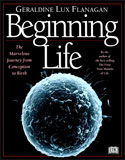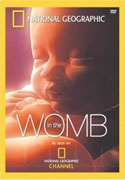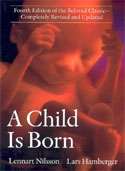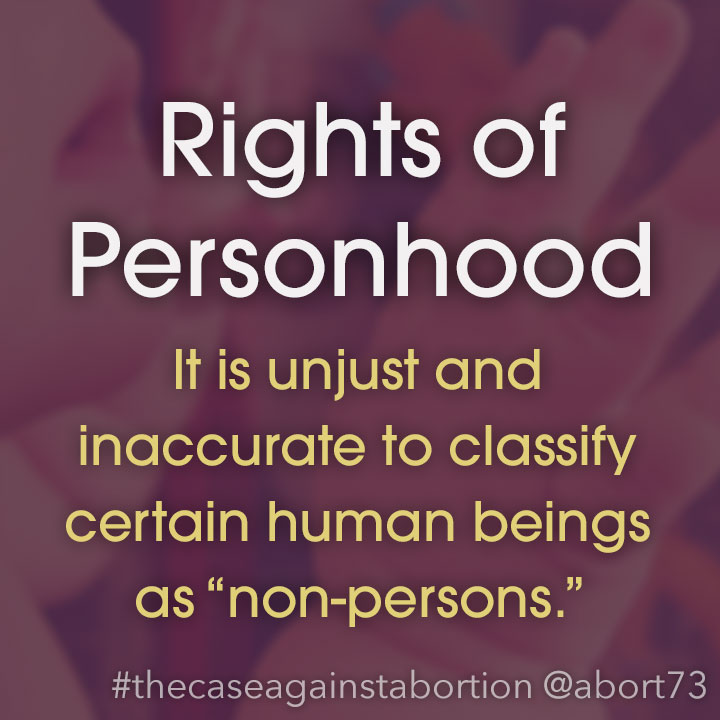Page Summary:
By definition, humanity and personhood go hand in hand. Developing humans in the womb have an intrinsically personal nature and even demonstrate "personality" in many of the same ways that newborn babies do.
There are essentially two questions to ask in regard to embryos and fetuses. The first is, "Are they human beings?" The second is, "Should they be recognized as persons under the law?" We've already established that there is no debate on the first question. It is a matter of plain objective science. Embryos and fetuses are fully and individually human from fertilization on. If this were not true, there would be no need to even talk about rights of personhood. "Removing a fetus" would be the moral equivalent of pulling a tooth. This, however, is not the case, and so the debate must enter the political arena.
Should humans be recognized as persons under the law? Yes, because humans are persons. Something is a person if it has a personal nature.1 In other words, something is a person if, by nature, it has the capacity to develop the ability to think rationally, express emotion, make decisions, etc. This capacity is something that a person has as soon as he or she begins to exist, since it is part of his or her nature. Because humans have a personal nature, humans are persons. As for the fetus, since it is a human (something with a personal nature), it is a person.2 Just as a cat qualifies as a feline simply by being a cat, a fetus qualifies as a person simply by being a human.3 It is impossible for a fetus to not be a person.
This fact should be enough. The intrinsic humanity of unborn children qualifies them as persons and should guarantee their protection under the law. Since 1973, however, this has not been the case in America. The situation we are left with is this. There is a huge and singular group of living human beings who have no protection under the law and are being killed en masse every day. Is that not astounding?! It is astounding, but not wholly unprecedented.
There have been at least two other instances in American history in which specific groups of human beings were stripped of their rights of personhood as a means of justifying horrific mistreatment. African-Americans and Native-Americans both felt the brunt of a system which tried to create the artificial classification: human, non-person. This distinction wasn't based on an honest evaluation of the evidence. It was made with an eye towards justifying a specific action. In the case of Native-Americans, they had land. In the case of African-Americans, they had labor. Classifying them as non-persons (even property) provided a moral framework for those in power to forcefully take what they wanted without compensation. Today, "unwanted," unborn children don't hold anything as tangible as land or labor, but their claims on those who would eliminate them are no less significant. They stand in the way of an unencumbered life. Once again, this notion that human beings can be classified as "non-persons" is not built on an objective assessment of the facts. It is built on the utilitarian attempt to justify abortion.
At this point, some people define the term "person" according to function. Call this view the functional view of persons. They argue that something qualifies as a person only if it can do certain things, like think rationally. But this definition of personhood fails. First, there are clear cases in which something qualifies as a person but cannot do the things required of the functional view of persons.4 For example, a human person under a general anesthesia does not qualify as a person under the functional view of persons, since a person in this situation does not have the ability to think rationally. Two, the functional view of persons does not fit certain intuitions about persons. For example, if you had a cat that couldn’t purr, couldn’t chase mice, and couldn’t climb trees, you wouldn’t say that your cat isn’t a feline—though you should if you define "feline" in terms of function. Instead, you would say that your cat is a cat that can’t purr, chase mice, or climb trees.5 In the same way, if a human being can’t think rationally, there is no reason to say that this human is not a person.
Even though we do not qualify or disqualify something as a person on the basis of what it can or can’t do, it’s still worth noting that fetuses display aspects of their personal nature while still in the womb. That is, fetuses can do things that you would only expect of more fully developed persons. For example, National Geographic, in their video, In the Womb: Multiples, goes so far as to say, "As identical twins grow bigger, they're almost always in contact, touching hands, faces, feet and gradually becoming more aware of themselves and each other." Did you catch that? They're becoming more and more aware of themselves and each other. Developing human beings begin responding to and interacting with their environment long before they are born. Dr Bernard Nathanson once stated, "I have put Mozart in a tape player and held it against a womb at, say, seven months, and the baby moved a little, but when I put Van Halen on, the baby was jumping all over the place."6
The following testimonies highlight the remarkable social interactions taking place inside the womb:

"The womb is not a quiet, isolated place; life within it offers abundant and varied experiences that prepare the baby for the world she will meet when she moves out. We are learning to recognize how sensitive, able and already experienced a newly born baby is. She arrives able to breathe and feed, and occasionally can complain loudly. She is also able, in quiet and subtle ways, to respond to people and is so endearing in her actions that she can elicit the loving care she needs. Her competence has developed gradually. New means of observation have made it possible to discover how responsive and active the baby already is in the months preceding birth. Certainly she does not simply lie there curled up in the legendary fetal position."
Geraldine Lux Flanagan, Beginning Life. New York: DK, 1996. p. 9.

"The fetus behaves in a much more complex way than previously imagined... During her odyssey in the womb she will smile, recognize her mother's voice and maybe even dream."
In the Womb, National Geographic, 2005.

"By midpregnancy the fetus has begun to explore its own body and environment using its hands. It often holds on to the umbilical cord, and when a thumb approaches its mouth, it will turn and begin to make sucking motions with its lips... The fetus is also using its sense of hearing for orientation. Its most familiar sounds are surely the noises of the mother's digestive system and the swishing from her major blood vessels, but gradually the fetus also begins to perceive the sounds of the mother's world, such as music and the father's voice. The eyes of the fetus are sensitive to light, even though the eyelids are still shut tight... We have no way of knowing whether the fetus tastes the slight salinity of the amniotic fluid. Still, we have indirect evidence that the fetus tastes and smells, since a newborn immediately reacts positively or negatively to tastes that are sweet, salty, or bitter..."
Lennart Nilsson and Lars Hamberger, A Child is Born, 4th edition. New York: Bantum Dell, 2003. p. 141.

"Until healthy babies were first observed by ultrasound in extensive studies in the 1980s while the mothers were resting quietly, it was not known that babies have such a diverse repertoire of movements at this early time, and perform these so smoothly and so frequently. It was a revelation that movements are polished almost from their first appearance and do not start in a clumsy and poorly coordinated way... The system is innately fine-tuned from the start and by exercise it is maintained in working order."
Geraldine Lux Flanagan, Beginning Life. New York: DK, 1996. p. 62.

"One of the many things revealed by the 4D scans is the fact that babies have rapid eye movement sleep. This is a period of sleep when the eyes slicker around behind the eyelids. Later in life, this is an indication of dreaming. This gentle flicker of an eye could be a sign that the fetus, still with a month to go before being born is already dreaming."
In the Womb, National Geographic, 2005.

"Does a fetus see anything? It is known that the eye can sense light as early as the third month of pregnancy. Sometimes when an endoscope is inserted into the amniotic sac, a fetus tries to protect its eyes from the light on the instrument, either by turning away or by using its hands and fingers."
Lennart Nilsson and Lars Hamberger, A Child is Born, 4th edition. New York: Bantum Dell, 2003. p. 146.

"Twins, and other multiples, are known for a particular characteristic in utero. Scientists have even witnessed them playing games together... Scientists think their prenatal behavior [carries] over into early childhood."
In the Womb, National Geographic, 2005.
In America today, there is only one group of human beings for which being human is not enough: "unwanted," unborn children. The inconvenience of their existence has resulted in a legal loophole of shameful proportions. They're small. We can't see them. They're in the way, so we define personhood in a way that conveniently excludes them. How is that tolerant and inclusive? If it is morally reprehensible to kill a developing human being after birth, it is no less reprehensible to kill a developing human being before birth.
This page was last updated on October 01, 2019. To cite this page in a research paper, visit: "Citing Abort73 as a Source."
- Greg Koukl, “Are Humans Persons?” Accessed June 3, 2009; Available from http://www.str.org/site/News2?page=NewsArticle&id=5117.
- Robert George and Christopher Tollefsen, Embryo: A Defense of Human Life (New York: Doubleday Broadway Publishing Group, 2008), 58.
- Francis Beckwith, “The Explanatory Power of the Substance View of Persons,” Christian Bioethics 10 (2004): 33-54.
- Beckwith, “The Explanatory Power of the Substance View of Persons.”
- Beckwith, “The Explanatory Power of the Substance View of Persons.”
- Bernard N. Nathanson, M.D. The Hand of God (Washington, DC: Regnery Publishing, 1996), 130.
Footnotes
Possible Objection:
Abortion is a simple, surgical procedure. It is ludicrous to compare it to historic injustices. Doctors who perform abortions are simply doing what doctors are supposed to do: provide relief for their patients while eliminating what ails them.
To learn our response, continue to the next page: Abortion Procedures
Related Topics:
- Fertilization | Law | History | African-American | Twins | Womb | Pregnancy | Ultrasound
For Further Study:
- Is Dehumanization Always & Intrinsically Unjust? (Abort73 Blog)





